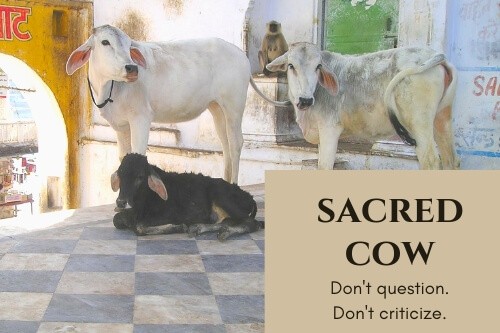
YouTube / iTunes / Spotify / Radio Public / Pocket Casts / Google Podcasts / Breaker / Overcast
Listen to ArtisanEnglish.jp posts & lesson intros here.
WotD: Sacred cow
Canada is a nation of easy-going people who can accept many changes and new developments, but free healthcare is a sacred cow for us.
Many Americans hated Obamacare even though it benefited a tremendous number of people.
The United States is the land of the free and the home of the brave.
Americans are a people who will bravely face a world without free health care if it enables them to enjoy the freedom that they desire.
Whereas Canadians value our free healthcare system, freedom to choose is for Americans, their sacred cow.
A sacred cow is something such as a belief or right that people do not want to be changed or questioned in any way.
It comes from the treatment of cows in India.
Hinduism believes that cows are a symbol of God’s generosity, and therefore, they are given a privileged status.
Each country has something that is for the people in that country, a sacred cow.
You see it all the time on the TV news.
Bread or fuel riots occur in different countries because the government has cancelled subsidies for these goods.
The population may consider cheap bread or cheap fuel a right.
When they see that sacred cow being tampered with, they violently and persistently protest until the government backs off.
As I write this, I’ve been wracking my brain trying to figure out what is a sacred cow in Japan.
There have been so many changes in the 20 years I’ve lived here that it’s hard to say anything is a sacred cow that should be left untouched.
For a long time, pacifism, as written into the constitution, had been a sacred cow, but thanks to Prime Minister Abe, it seems Japan will change its tune.
Rice also comes to mind, but many traditional Japanese rice snacks are made with imported rice.
Yes, most of the rice on the table is still grown in Japan, but for how long?
If you come up with something that is a sacred cow in Japan, I’d love for you to tell me.
Flesch-Kincaid Readability Test
This post is understandable by someone with at least a 7th-grade education (age 12).
On the Flesch-Kincaid reading-ease test, this post scores 73.
The easier a passage is to read, the higher the score on a scale of 0 – 100.

